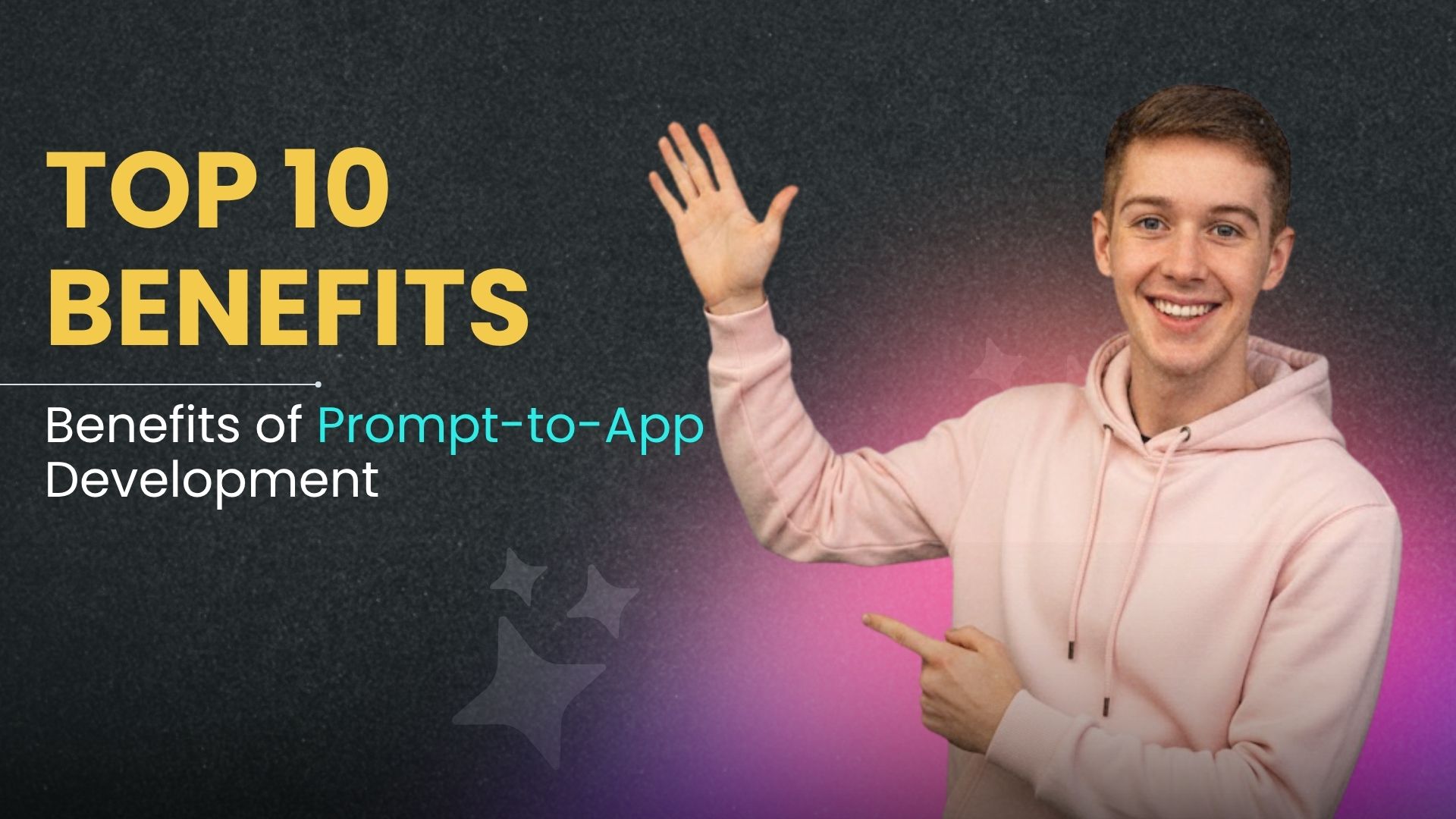
Understanding the Power of AI in Mobile Apps
Exploring the Benefits of AI Integration
Integrating AI into your mobile app offers significant advantages in 2024. Enhanced user experience is a key benefit. AI-powered features like personalized recommendations (think Netflix suggesting shows), smart search, and predictive text input significantly improve user engagement and satisfaction. Apps like Grammarly demonstrate the impact of AI on user experience through real-time grammar and style checking. These improvements lead to increased user retention and positive reviews.
Furthermore, AI integration provides opportunities for data-driven optimization and increased efficiency. By analyzing user behavior and preferences, developers can fine-tune app features and functionality. This data-driven approach allows for proactive improvements and the identification of potential issues before they impact users. For example, apps can use AI to predict and prevent crashes, optimize battery usage, or personalize content delivery. “AI is no longer a futuristic concept; it’s a powerful tool for building better, smarter mobile applications today.” This results in a more robust and efficient app, saving development time and resources.
Launch Your App Today
Ready to launch? Skip the tech stress. Describe, Build, Launch in three simple steps.
BuildIdentifying Suitable AI Features for Your App
Choosing the right AI features is crucial for a successful app. Don’t just add AI for the sake of it; instead, carefully consider your app’s core functionality and target audience. For example, a photography app might benefit from AI-powered image enhancement and object recognition, while a fitness app could leverage AI for personalized workout recommendations and progress tracking. Think about how AI can genuinely improve the user experience and solve specific problems. “Integrating AI should enhance, not complicate, your app.”
Consider the technical feasibility and potential costs. Some AI features require significant computing power and data storage. This can impact app performance and development time. For instance, real-time language translation might need a powerful cloud-based AI solution, unlike a simple chatbot that could operate more efficiently offline. Before committing to complex AI integrations, conduct thorough research and prototyping to assess their viability and value proposition for your specific mobile app project. Remember to prioritize features that offer the most significant impact on user engagement and satisfaction.
Examples of Successful AI-Powered Mobile Apps
Many popular apps already leverage AI’s capabilities to enhance user experience. For example, Google Photos uses AI for image recognition and organization, automatically categorizing and suggesting relevant searches within your photo library. This demonstrates the power of AI in simplifying complex tasks. Grammarly, a writing assistant app, employs AI algorithms for grammar and spelling checks, offering real-time suggestions for improved writing. Its widespread popularity highlights the user demand for AI-driven assistance in everyday tasks.
Beyond these established players, newer apps are pushing AI integration further. Consider the advancements in personalized recommendations within streaming services like Spotify and Netflix. These services use AI to analyze listening/viewing habits, offering tailored suggestions that significantly improve user engagement. “The success of these apps underscores AI’s potential to create more intuitive and personalized mobile experiences,” showing that AI is no longer a niche technology but a key driver of app success. AI-powered features improve user experience and app performance, and are now essential for app developers.
Choosing the Right AI Development Platform
No-code/Low-code Platforms for Rapid Prototyping
Rapid prototyping is crucial in the mobile app development lifecycle, especially when integrating AI. No-code/low-code platforms offer a significant advantage here. They allow developers, even those without extensive coding experience, to quickly build and test AI-powered features. Popular options include platforms like Budibase and AppSheet, which offer pre-built AI components and integrations with services like Google Cloud AI and Azure Cognitive Services. This accelerates the development process, allowing for faster iteration and feedback loops.
Using these platforms significantly reduces the time and resources required for initial development. This is especially beneficial for startups or smaller teams. Faster prototyping enables quicker exploration of different AI features and models without getting bogged down in complex coding. “This agility is key to navigating the rapidly evolving landscape of AI in mobile app development, helping businesses respond quickly to market demands and user feedback.” Remember to carefully consider the limitations of no-code/low-code platforms for complex AI applications. For highly customized AI solutions, a traditional coding approach might be necessary.
Cloud-Based AI Services and APIs
Leveraging cloud-based AI services and APIs offers significant advantages for mobile app development in 2024. Providers like Google Cloud AI Platform, Amazon Machine Learning, and Microsoft Azure Cognitive Services offer pre-trained models and customizable APIs for various tasks. This eliminates the need for extensive in-house machine learning expertise and infrastructure, allowing developers to quickly integrate features like image recognition, natural language processing, and sentiment analysis. “This significantly reduces development time and cost, making AI accessibility much broader.”
Choosing the right cloud provider depends on your specific needs and existing infrastructure. Consider factors like pricing models, the availability of specific AI models relevant to your app’s functionality (e.g., speech-to-text, chatbot capabilities), and the level of support offered. For example, Google Cloud’s strong performance in natural language processing might be ideal for a language-learning app, while Amazon’s robust image recognition services could better suit a visual search application. Carefully evaluating these factors ensures you select the platform best suited for your project and future scalability.
Custom AI Development: Advantages and Considerations
Building a mobile app with custom AI development offers unparalleled flexibility. You gain complete control over every aspect of your AI’s functionality, ensuring a perfect fit for your app’s unique needs. This approach is ideal for complex projects demanding highly specialized AI capabilities, such as sophisticated image recognition tailored to a specific industry or a personalized recommendation engine based on proprietary data. For example, a financial institution might choose custom AI development to create a fraud detection system with unique algorithms reflecting their specific transaction patterns.
However, custom AI development requires significant upfront investment. The process is more time-consuming and resource-intensive compared to using pre-built AI solutions. You’ll need a skilled team of AI engineers and potentially data scientists, incurring higher costs. “Thorough planning and a well-defined scope are absolutely crucial to manage these costs and timelines effectively.” This approach is best suited for companies with substantial resources and a clear understanding of their AI requirements. Careful consideration of these factors is essential before embarking on custom AI development for your mobile app.
Essential Steps to Build Your AI-Powered Mobile App
Planning and Designing Your App’s AI Features
Before diving into code, meticulously plan your app’s AI features. Define the core problem your AI will solve. Will it be image recognition, natural language processing, or perhaps predictive analytics? Clearly outlining this central function ensures focused development and prevents scope creep. Consider user experience (UX) from the outset. How will users interact with the AI? Will it be through voice commands, text input, or image uploads? A well-designed user interface (UI) is crucial for seamless integration of AI capabilities. For example, a poorly designed voice interface might frustrate users, undermining the benefits of your AI.
Next, choose the appropriate AI model and tools. TensorFlow Lite and ML Kit are popular frameworks for mobile AI development, offering pre-trained models and customizability. Remember, model selection hinges heavily on your defined problem and available resources. A complex model requires substantial computing power and may drain the user’s battery, impacting user satisfaction. “Prioritizing a balance between accuracy and efficiency is key to building a successful AI-powered mobile application.” Thorough testing is imperative at this stage. Evaluate your AI’s performance, identify limitations, and refine your design based on the results. This iterative approach is vital for building a robust and user-friendly AI app.
Developing and Testing Your App’s Core Functionality
This crucial phase involves translating your design into functional code. Start with a Minimum Viable Product (MVP), focusing on core AI features. This iterative approach allows for early user feedback and avoids wasting resources on unnecessary functionalities. Remember to choose the right programming languages and development frameworks, such as Swift/Kotlin for native apps or React Native/Flutter for cross-platform development. Consider integrating pre-built AI APIs like Google Cloud AI or Amazon Machine Learning to accelerate development and reduce costs. “Prioritize seamless integration between your app’s UI and the AI engine for a positive user experience.”
Thorough testing is paramount. Employ a variety of testing methods including unit testing, integration testing, and user acceptance testing (UAT). Unit testing verifies individual components, while integration testing ensures the AI modules work correctly together. UAT involves real users testing the app in realistic scenarios. This step is crucial for identifying and resolving bugs, ensuring app stability and performance, and ultimately delivering a high-quality, user-friendly AI-powered mobile application. Consider employing beta testing with a select group of users before a full release to gather valuable feedback. “Addressing user feedback and making necessary adjustments is vital for a successful launch.”
Integrating AI Models and APIs
Selecting the right AI models and APIs is crucial for your app’s success. Consider factors like accuracy, latency, and cost. For example, Google’s Cloud Vision API excels at image recognition, while Amazon Transcribe shines for speech-to-text. Your choice will depend heavily on your app’s specific functionality. “Thorough research and testing of different options are essential before committing to a particular provider.” Don’t underestimate the importance of understanding the limitations of each API; this will prevent unexpected problems later in development.
Once you’ve chosen your AI infrastructure, seamless integration is key. This often involves using SDKs (Software Development Kits) provided by the API providers. These kits simplify the process of connecting your app’s frontend and backend to the chosen AI services. Remember to carefully manage API keys and authentication to ensure security. “Properly secured integration is critical to protect user data and prevent unauthorized access.” Regularly update your APIs to benefit from the latest improvements and bug fixes. This ensures optimal performance and keeps your app competitive.
Ensuring Data Security and Privacy
Data security and user privacy are paramount when building AI-powered mobile apps. In 2024, regulations like GDPR and CCPA are crucial considerations. You must design your app with robust security measures from the outset. This includes employing strong encryption for data both in transit and at rest. Regular security audits are essential to identify and address vulnerabilities. Consider implementing multi-factor authentication for enhanced user protection. Failing to prioritize security can lead to significant legal and reputational damage. “Data breaches not only violate user trust but can also result in hefty fines.”
Choosing the right cloud provider is also critical. Look for providers with strong security certifications and a proven track record of data protection. Integrate privacy-enhancing technologies (PETs) like differential privacy or federated learning to minimize the risk of exposing sensitive user data. Transparency is key; clearly articulate your data collection and usage practices in a user-friendly privacy policy. Remember, building trust with your users through robust data protection is fundamental to the long-term success of your AI mobile app. User trust is earned; proactively demonstrate your commitment to security and privacy.
Monetization Strategies for Your AI Mobile App
Freemium Models and In-App Purchases
The freemium model is a popular choice for AI mobile apps. It offers a basic version for free, enticing users to upgrade to a premium version for enhanced features. Think of popular apps like Spotify or Candy Crush. This allows you to acquire a large user base quickly. You can then monetize a subset of these users with premium subscriptions offering features like advanced AI capabilities or ad-free experiences. “This strategy is particularly effective for apps with a strong viral component or high user engagement.” Successful implementation requires carefully balancing free and paid features to maximize user satisfaction and revenue.
In-app purchases provide another avenue for monetization. This could involve selling virtual currency, power-ups, or additional AI models within the app. Examples include games offering in-game purchases or productivity apps offering premium templates. Careful consideration of pricing and the value proposition is vital. “Ensure that the in-app purchases genuinely enhance the user experience, rather than feeling like forced purchases.” A well-designed in-app purchase system can significantly boost your app’s revenue without hindering user engagement, providing a strong and sustainable income stream.
Subscription Services and Premium Features
Offering subscription services is a proven monetization strategy for AI-powered mobile apps. Consider a freemium model, providing basic functionality for free while charging for premium features like advanced AI capabilities or increased usage limits. For example, a photo editing app could offer basic filters for free, but users would subscribe for access to AI-powered background removal or advanced retouching tools. This approach encourages user engagement and generates recurring revenue. Remember to clearly define the value proposition of your premium subscription, highlighting the benefits users receive beyond the free version. “A well-structured subscription model can significantly boost your app’s profitability.”
Premium features unlock additional value for your users, driving higher engagement and increasing lifetime value. You can implement tiered subscription levels, offering progressively more advanced features at higher price points, catering to different user needs and budgets. Examples include offering unlimited AI processing, priority customer support, or exclusive content updates. Success hinges on offering tangible benefits and aligning the pricing with the perceived value. “Prioritize user experience when designing your premium offering; seamless integration and clear communication are crucial for a successful monetization strategy.” Carefully consider which features are best suited for premium access, ensuring a compelling value proposition for paying subscribers.
Targeted Advertising and Data Monetization
Leveraging user data responsibly is key to successful AI mobile app monetization. Targeted advertising offers a powerful revenue stream. By analyzing user interactions and preferences—with full transparency and user consent, of course—your app can deliver highly relevant ads. This increases click-through rates and advertiser ROI, leading to higher payouts for your app. Remember, complying with privacy regulations like GDPR and CCPA is crucial. Failing to do so can result in hefty fines and irreparable damage to your app’s reputation. “Prioritize user privacy to build trust and long-term success.”
Beyond advertising, consider data monetization strategies. This could involve anonymizing and aggregating user data to create valuable insights for market research or business intelligence. Companies are willing to pay for this information, especially if it’s tailored to their specific needs and derived from a reliable source. For example, an AI-powered fitness app could sell anonymized workout data to fitness equipment manufacturers. This provides additional revenue streams while respecting user privacy. “Always ensure you have explicit consent and clearly outline your data usage policies.”
Exploring Partnerships and Collaborations
Strategic partnerships can significantly boost your AI mobile app’s revenue streams. Consider collaborating with companies whose products or services complement yours. For example, an AI-powered fitness app could partner with a nutrition company for bundled subscriptions or joint marketing campaigns. This cross-promotion expands your reach to a new customer base, increasing both brand awareness and potential revenue. “Think about synergistic relationships that provide added value to your users.”
Successfully navigating the landscape of collaborations requires careful planning. Thoroughly vet potential partners to ensure alignment with your brand and target audience. Negotiate clear terms and conditions, defining revenue sharing models and marketing responsibilities upfront. Document everything formally. Examples of successful partnerships include those between fitness tracking apps and wearable technology manufacturers, demonstrating the power of complementary offerings. “Strong partnerships provide not only financial benefits but also enhanced user experiences, fostering long-term app success.”
Future Trends and Considerations in AI Mobile App Development
The Evolving Landscape of AI Technologies
The AI landscape is rapidly evolving. We’re seeing advancements in several key areas impacting mobile app development. Generative AI, for example, is moving beyond simple text generation to create more sophisticated interactive elements within apps. Companies like OpenAI and Google are pushing the boundaries, leading to more engaging and personalized user experiences. This includes improved natural language processing (NLP) for chatbots and virtual assistants, offering increasingly human-like interactions. We are also seeing the rise of multimodal AI, capable of processing and integrating information from various sources like text, images, and audio, to provide a more holistic understanding of user needs within the app.
Another significant trend is the increasing focus on edge AI. This involves processing AI computations directly on mobile devices, rather than relying solely on cloud servers. This reduces latency, improves privacy, and enables offline functionality – crucial features for many mobile applications. For instance, Google’s TensorFlow Lite framework is a prime example of technology enabling sophisticated on-device AI. “The shift towards edge AI is critical for building truly responsive and user-friendly AI-powered mobile apps,” as it directly addresses bandwidth limitations and data security concerns. The availability of increasingly powerful yet energy-efficient mobile processors is further fueling this trend.
Staying Ahead of the Curve with Emerging Trends
The AI mobile app development landscape is rapidly evolving. Keeping pace requires constant learning and adaptation. New frameworks, like TensorFlow Lite, are continuously improving, offering better performance and efficiency for on-device AI processing. Companies like Google and Apple are heavily investing in this space, releasing powerful tools and APIs regularly. Staying informed about these advancements is crucial for developers. Consider joining relevant online communities and attending industry conferences to network and stay updated.
“Successful developers will proactively explore and integrate emerging AI technologies.” This includes advancements in areas like generative AI for creative app features, computer vision for enhanced image recognition, and natural language processing (NLP) for sophisticated chatbot implementations. Don’t just react to trends; anticipate them. Experiment with new tools and technologies. “Embrace a culture of continuous learning and experimentation within your development team.” This proactive approach will position you to create truly innovative and market-leading AI-powered mobile applications in 2024 and beyond.
Ethical Considerations and Responsible AI Development
Developing AI-powered mobile applications requires careful consideration of ethical implications. Bias in algorithms is a significant concern. For example, facial recognition technology has demonstrated biases against certain ethnic groups, highlighting the need for rigorous testing and mitigation strategies. Data privacy is paramount; apps must comply with regulations like GDPR and CCPA, ensuring transparent data handling and user consent. “Building trust with users is crucial for the success of any AI mobile app.”
Responsible AI development demands proactive measures. This includes implementing robust mechanisms to detect and address algorithmic bias. Regular audits are essential to monitor fairness and accuracy. Furthermore, incorporating user feedback loops allows for continuous improvement and addresses potential ethical concerns promptly. Transparency about data usage and AI functionality fosters user trust and strengthens the app’s ethical foundation. “Prioritizing ethical AI is not just a moral imperative; it’s vital for long-term app success and user adoption.”
Real-world examples of successful AI Mobile Apps
Apps using AI for image recognition
Many apps leverage AI-powered image recognition for practical applications. Pinterest Lens, for example, allows users to take a picture of an item and find similar products online, demonstrating the power of visual search technology. This feature enhances user experience significantly, boosting engagement and driving sales for affiliated businesses. The app cleverly combines computer vision with a vast database to provide highly relevant results.
Other successful examples include Google Lens, which offers a broader range of functionalities beyond shopping. It can translate text in images, identify landmarks, and even provide information about plants and animals. Object detection and scene understanding are key AI capabilities powering this app. “These features showcase the versatility and growing importance of AI-driven image recognition in mobile applications across diverse sectors.” The increasing accuracy and speed of these technologies promise even more innovative and helpful applications in the future.
Apps using AI for natural language processing
Many popular apps leverage AI-powered natural language processing (NLP) to enhance user experience. Grammarly, for example, uses NLP to analyze text in real-time, offering suggestions for grammar, spelling, and style improvements. This demonstrates the power of NLP in assisting users with written communication. Other apps, such as Google Translate, rely heavily on NLP algorithms to accurately translate between different languages, breaking down communication barriers for millions worldwide. These readily available tools showcase the practical application of advanced NLP in everyday mobile apps.
Beyond basic grammar and translation, NLP fuels more sophisticated applications. AI chatbots, integrated into numerous apps, use NLP to understand user queries and provide relevant responses. This is particularly impactful in customer service, where AI chatbots can handle routine inquiries, freeing up human agents to address complex issues. “The ability of NLP to understand context and intent is crucial for creating genuinely helpful and engaging conversational AI within mobile apps,” allowing for more personalized and efficient interactions. This trend will only continue to grow in 2024 and beyond, shaping future app development significantly.
Apps using AI for personalized recommendations
Many popular apps leverage AI for personalized recommendations, significantly enhancing user experience. Netflix, for example, utilizes sophisticated algorithms analyzing viewing history, genre preferences, and even viewing times to suggest shows and movies tailored to individual users. This highly effective strategy boosts user engagement and retention, directly impacting their bottom line. Their success highlights the power of AI-driven personalization in the mobile app landscape.
This trend extends beyond entertainment. Shopping apps like Amazon and Stitch Fix rely heavily on AI to suggest products. They analyze past purchases, browsing behavior, and even social media activity to offer customized product recommendations. “These AI-powered recommendation engines demonstrably improve conversion rates and average order values,” showcasing the commercial value of implementing AI in mobile app development. The ability to predict user needs and proactively suggest relevant items is a key differentiator in today’s competitive market.
Launch Your App Today
Ready to launch? Skip the tech stress. Describe, Build, Launch in three simple steps.
Build




